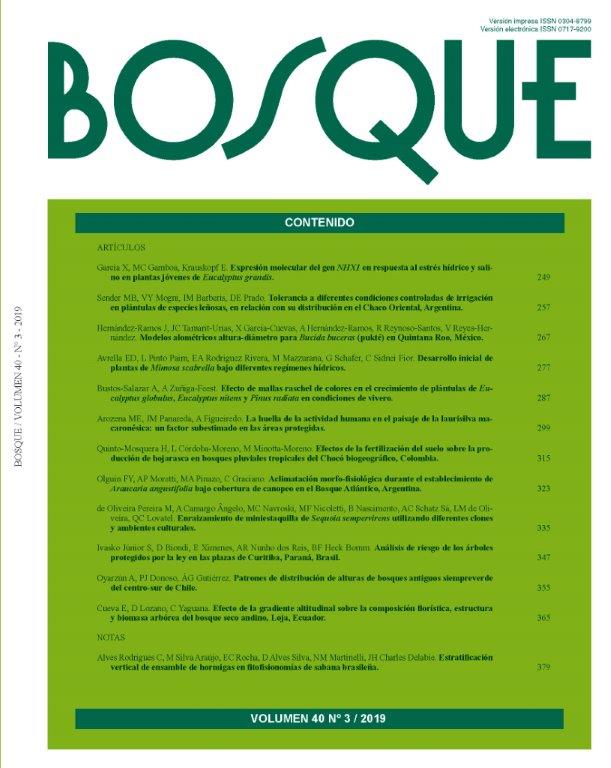Tree height distributions in the canopy of old-growth temperate rainforests of south-central Chile
Main Article Content
Abstract
Canopy structure is relevant to understand forests functioning and sustaining biodiversity. In Chile, old-growth temperate evergreen rainforests have been characterized by a muti-stratified canopy; however, it is uncertain the common number of strata formed in the canopy or how dynamic processes structure the forest canopy. In this study, we evaluated two alternative hypotheses to explain canopy structure in old-growth temperate evergreen rainforests of Chile, i) the increased density of shade-tolerant tree species along the succession should lead to a non-stratified canopy, and ii) the occurrence of disturbances (e.g. individual tree falls opening gaps in the canopy) would allow species with different life strategies to concentrate at specific canopy heights, leading to stratified canopies. We tested these hypotheses in four old-growth stands, where we measured tree height distributions and the degree of correlation among vertical variables. We found two to three well defined strata in the canopy made up of species groups with similar functional traits. These results support the second hypothesis and suggest that the pattern of crown aggregation may be explained by the life strategies of the species, adapted to the occurrence of canopy openings. The dynamics of canopy gaps favors a stable canopy stratification in these forests along the succession. This is relevant for the elaboration of sustainable management strategies and the conservation of the biodiversity of these ecosystems.

